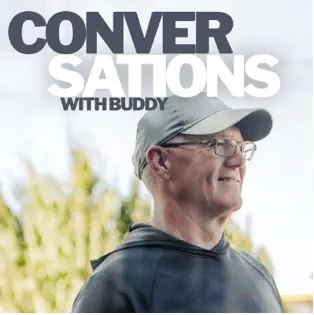Local efforts help youth suicide deaths drop 26% since 2018
Editor’s Note: If you or someone you know is struggling or in crisis, help is available. Call or text 988 or chat 988Lifeline.org.
PORTLAND, Ore.—Recently released Centers for Disease Control and Prevention (CDC) data show 2021 was the third year in a row that suicide deaths among Oregon youths had decreased.
This marks a 26% decrease in the number of suicide deaths among youth and young adults 24 and younger, from a peak in 2018, when 129 youth died by suicide. In 2021, 95 Oregon youth died by suicide. Suicide remains the second-leading cause of death among people ages 5 to 24.
“For too long, far too many Oregon families and communities have experienced the devastating loss of a loved one to suicide,” said Jill Baker, youth suicide prevention coordinator at Oregon Health Authority (OHA). “While new data show some promise in our collective efforts to lower our state’s youth suicide rate, we rely heavily on local partners to continue doing the important work of increasing safety and wellness in their communities. We hope people in Oregon hear this news as a call to action: we all have a role in preventing suicide and we can make a difference. It will take our sustained efforts as a community to ensure that this promising trend continues. ”
The CDC data also show that death by suicide among all ages in Oregon increased in 2021, with 889 total deaths. Oregon has the 17th highest rate of suicide in the U.S., at 19.5 per 100,000.
While youth suicide figures by race and ethnicity in Oregon cannot be statistically analyzed due to small numbers, national trends show significant increases in youth suicide for Black/African American youth, American Indian/Alaskan Native youth and Latino/a/x youth.
“When interpreting demographic data, it is important to remember that many of these populations have been disproportionately affected by systemic racism, social-economic-political injustices and bias,” Baker added. “These inequities can worsen health outcomes and increase the risk of suicide.”
The most effective suicide prevention is local
Since launching the statewide Youth Suicide Intervention and Prevention Plan in 2016, and updating the plan in 2021, suicide prevention champions across Oregon have worked together and learned what it takes to support youth and decrease suicide.
OHA invests in several youth suicide prevention, intervention, treatment and postvention programs, and collaborates with other state agencies, counties, Oregon Tribal nations and Tribal partners, communities and advocacy groups to prevent suicide in Oregon. Key legislation such as Adi’s Act (2019), which requires school districts to have suicide prevention plans and added requirements for suicide prevention training for behavioral health providers, has also contributed to increased protection against youth suicide in Oregon.
Local leaders train everyday Oregonians to recognize warning signs, help providers follow best practices for suicide care, develop and support school district and health care policies and identify local suicide prevention champions. One promising practice that focuses on building protective factors and destigmatizing mental health issues is Sources of Strength, which has been implemented in more than 200 K-12 schools statewide, reaching at least 125,000 students in 2022 with “messages of hope, help and strength.”
“Strengths-based suicide prevention is not only important for how I relate to my students, but also deeply impacts me as a parent,” said Judy Fuentes, a visual arts teacher at Sisters Middle School who went through the training. “I didn’t realize how much I needed this or how much this program was going to affect me as a person.”
Rene Kesler, vice chair for the 30-plus-member Malheur County Prevention Coalition and a suicide prevention champion at Lifeways Inc., also helps train fellow community members on suicide “postvention” – how to respond when suicides do occur. Kesler is working to recruit faith leaders, law enforcement and peer support volunteers to get trained in postvention, which increases a community’s resilience and hope.
“As a suicide loss survivor, my bottom line is always going to be focused on looking for ways to pay it forward,” said Kesler. “In Malheur County, we find ways to help each other. There are all these misunderstandings about what grief is, and what it looks like. Learning as a community about traumatic grief is part of the process we can focus on to mitigate harm together.”
What can you do to help others?
We all have a part to play in reducing stigma and ensuring people have hope, feel safe asking for help, and can get access to community-based support. You can:
- Get involved in the work of suicide prevention in your area. Learn about local efforts on the website of the Oregon Alliance to Prevent Suicide.
- Get trained in suicide prevention. OHA recommends the Question, Persuade, Refer training for anyone in Oregon. It is a 1.5-hour course for those looking for a starting point to understanding their role in preventing suicide and feeling empowered with the skills and tools to help. Register for a free virtual class.
- Equip your system with broader skills. Check out our menu of suicide prevention trainings for all skill levels.
Know that it’s OK to ask for help
If you or someone you know is struggling or in crisis, help is available. The launch of the 988 Suicide & Crisis Lifeline makes it easier for individuals and their loved ones to access compassionate care and support from trained crisis counselors, 24 hours a day, seven days a week.
In addition to being easier to remember than the 10-digit existing National Suicide Prevention Lifeline, 988 is now also available via text and chat. 988 also offers specialized support for veterans (press 1 to connect with the Veterans Crisis Line or text 838255), Spanish speakers (press 2) and youth younger than 25 who identify as LGBTQIA2S+ (press 3 or text Q to 988).
The Substance Abuse and Mental Health Services Administration (SAMHSA) also has 988 social media shareables and other resources for partners to help promote 988.
Summary of data; notes on data sources
The CDC data come from the Wide-ranging Online Data for Epidemiological Research, or WONDER, system, which can be found at http://wonder.cdc.gov/. In previous years, OHA has analyzed data from the CDC’s Web-based Injury Statistics Query and Reporting System (WISQARS). The 2021 data from WISQARS have not yet been released by the CDC. For this reason, exact comparisons with past OHA reports may result in slight data variations.
- The new CDC data confirm a three-year decrease in youth suicides (24 and younger) in Oregon, with both fewer total deaths and a lower rate in 2019, 2020 and 2021.
- The 2021 data show that Oregon had the 22nd highest youth suicide rate in the U.S., down from the 11th highest in 2018.
- Oregon’s rate of youth suicide in 2021 was 12.4 per 100,000. In 2018, Oregon’s rate was 16.9 per 100,000. This remains above the national average (11.0 per 100,000).
- While Oregon has seen a 26% decrease in the youth suicide rate from 2018-2021, analysis shows those decreases were primarily for youth who identified as white. The number of youth deaths by race and ethnicity remained similar or have increased since 2018.
- Preliminary data for 2022 (which will not be official until spring 2024 when the CDC releases finalized data) indicate that Oregon will not see an additional decrease in youth suicide rates. More work needs to be done to ensure our progress continues, as risk for youth suicide continues to be a concern in Oregon.












